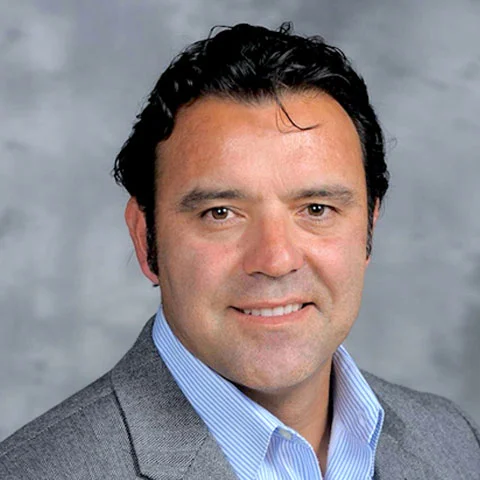Insurance must be flexible with communication channels and messaging
As an industry with a variety of stakeholders, insurance must adjust its communication channels and messaging to each audience. Inaccurate, inadequate, or confusing communication can ripple through an insurance company with damaging results. Every aspect of your company depends on strong communication.
Yet, with much advancement in InsurTech, it’s easy to get caught up in technology and the drive for efficiency, and forget that the insurance industry is made up of people talking to people. Remember, it’s your team–along with technology–that supports strong communication among insurance stakeholders.
The insurance industry arms itself with data and predictive analytics. Insurance professionals must immerse themselves in details and technical concepts, earning licenses proving their knowledge. There is a danger in forgetting how to talk to non-experts, including your own stakeholders.
A 2017 report published by the International Insurance Society stated, “We see this in the insurance industry–the current state of education and professional development is indeed rather narrow, and undervalues important skills.” The article argued for increased attention to communication skills.
The ability to convey information clearly and to listen, with empathy, requires human connectedness. Empathy is perhaps more in insurance than in any other industry, considering that customers are entrusting their lives and valuable possessions to insurers to protect. Look for opportunities to help your teams communicate more clearly, efficiently and empathetically.
Today, algorithms and artificial intelligence perform more and more computational tasks, potentially leaving room to focus on other, less technical elements of great insurance service. In other words, your team can maintain a human connection with your customers while using technology to prompt reminders, track communication and share timely updates.
Regardless of the stakeholder, you need to communicate clearly, in a timely manner and within compliance standards. This may require one or multiple systems, and each audience comes to the table with a different level of technical understanding. Following are things to keep in mind for each insurance stakeholder audience.
Reaching Insurance Customers Effectively
Customers bombarded by messages in all channels only pay attention to the most personalized ones. It’s important to understand your customers as much as possible in order to deliver meaningful information.
The consumer reporting firm Wiraya found that 86% of customers who left their insurance, energy, mobile or banking provider said they would have been more content with the service, had they received timely communication by their preferred method.
Keeping Shareholders Informed
Trust and transparency are crucial elements of shareholder communication. Shareholders expect to have their voices heard. An article from Harvard Law School says, “More than ever before, institutional shareholders are aggressively exerting their influence in the name of holding companies and management accountable.” It is also important how you use their input. Develop a system for evaluating and sharing it internally.
Gaining Insights from Insurance Agents and Brokers
Agents and brokers provide the most direct insights into what customers think and want. Whether they’re employees of an insurance company or independent contractors, they are on the front lines.
It’s important to make sure they understand your latest products and how to communicate the value of those products with customers. Your “preferred” agents especially expect ongoing education and readily available answers to questions. Insurance agents have their own communications plan that guide how they interact with customers as well as carriers, so look at what you can do to align your communications with theirs.
Insurance Industry Employees
Communicating with employees is a multifaceted endeavor. You need to keep them engaged with your brand and motivated to perform to the best of their ability on your behalf. In addition, you must keep them educated and informed on changes and new products. Always keep your team aware of the most recent status so there is never any lapse in communication from day-to-day or if someone is out of the office.
Above, we talked about the importance of communication skills for insurance employees. Encourage your employees to improve their communication skills by allowing them to take writing classes, author industry papers or speak at conferences.
It’s also critical that you empower them with the tools and technology that they need to communicate effectively. If you are using disparate software systems to track customer information, things can fall between the cracks. Give both in-house employees and outsourced services access to current, accurate information and tools that they need to do their jobs.
Free them from menial tasks that can be accomplished with automation so they can truly engage with stakeholders.
Outsourcing and InsurTech can help break down communication barriers among insurance stakeholders for everything from launching new products to issuing insurance certificates.
Patra’s full suite of cloud-based InsurTech SaaS solutions are designed to facilitate effective communication and smoother overall business operations. Most importantly, our technology is powered by people. Take steps now to build a better foundation for excellent communication.
About Patra
Patra is a leading provider of technology-enabled insurance outsourcing services and AI-powered software solutions. Patra powers insurance processes by optimizing the application of people and technology, supporting insurance organizations as they sell, deliver, and manage policies and customers through our PatraOne platform. Patra’s global team of over 6,500 process executives in geopolitically stable and democratic countries that protect data allows agencies, MGAs, wholesalers, and carriers to capture the Patra Advantage – profitable growth and organizational value.

